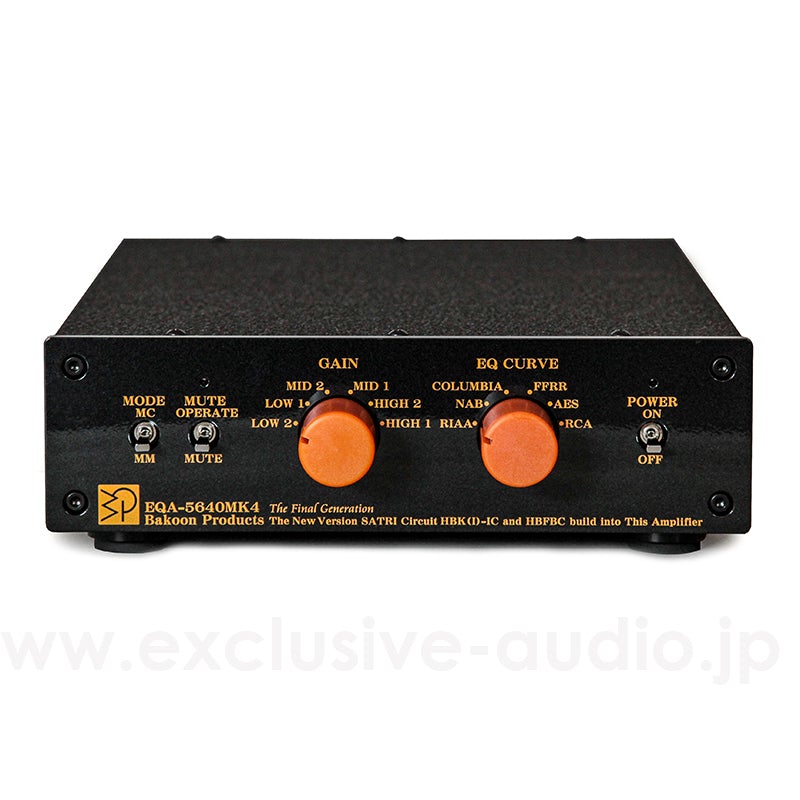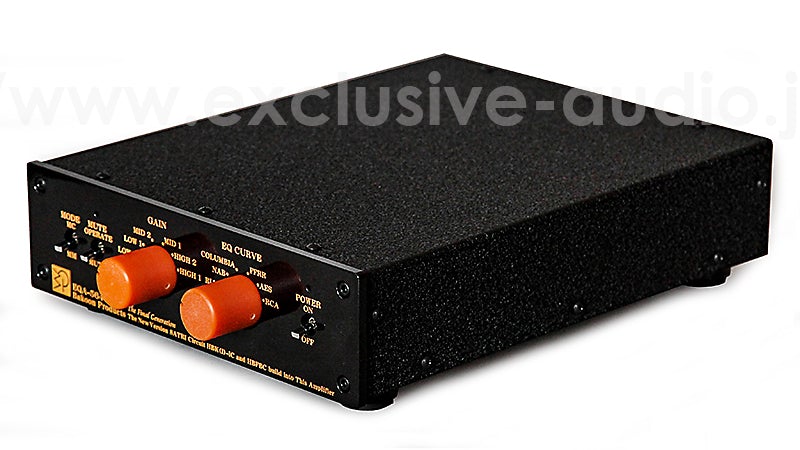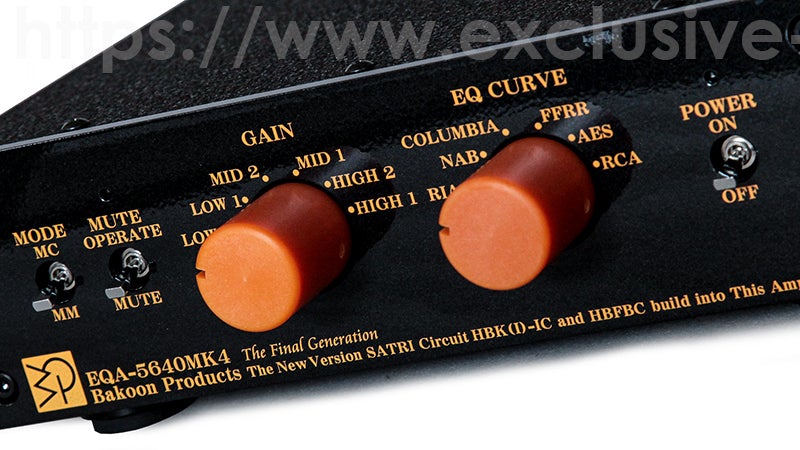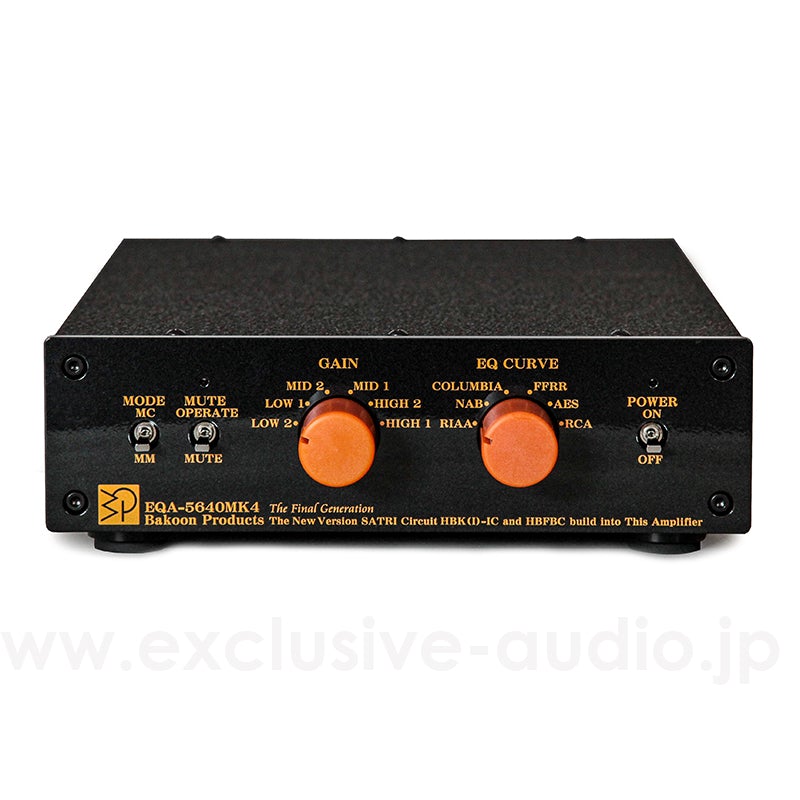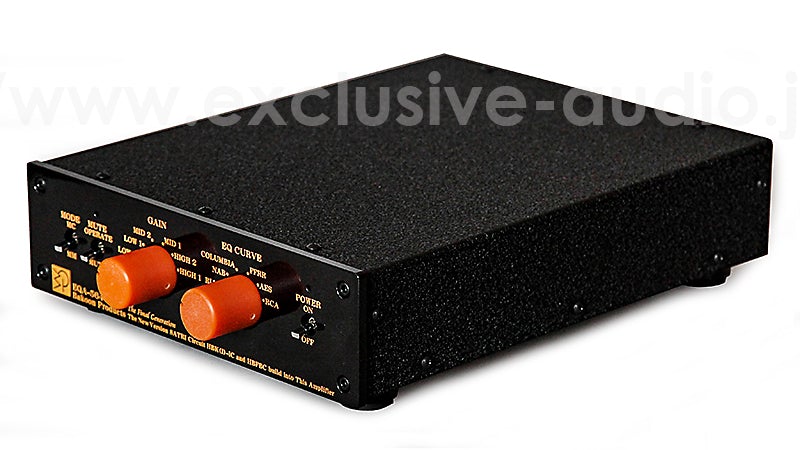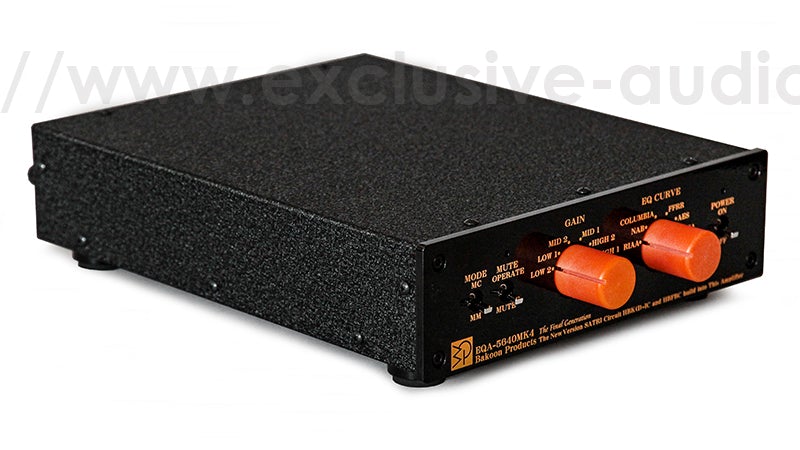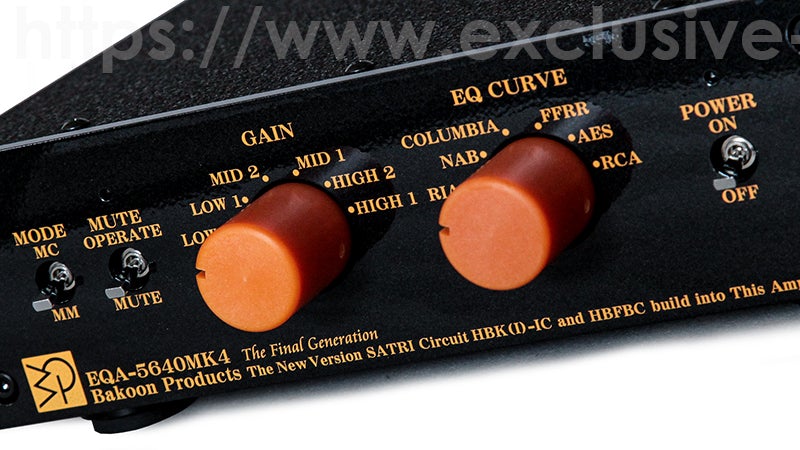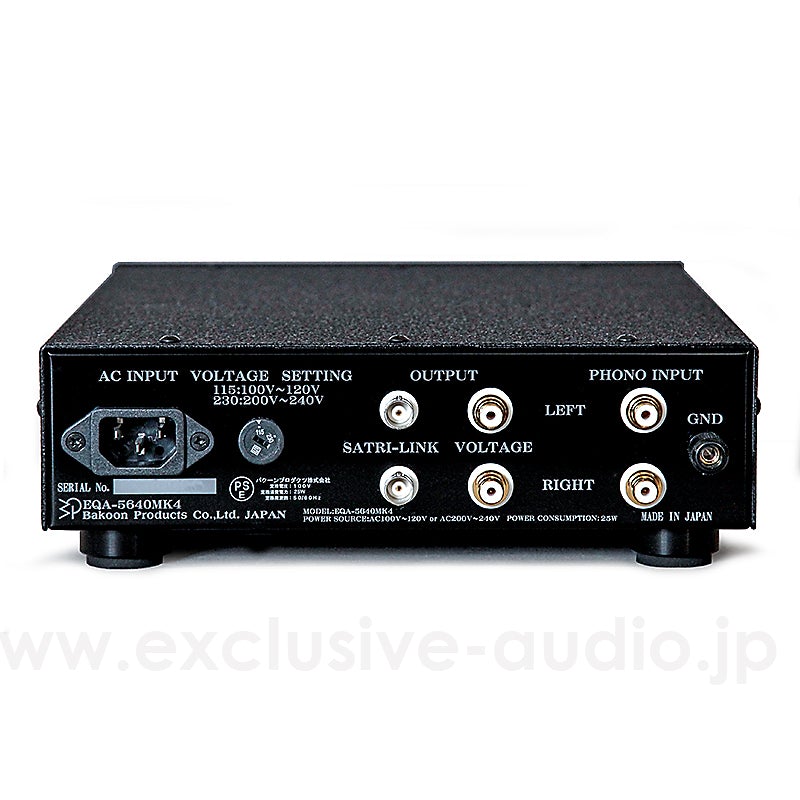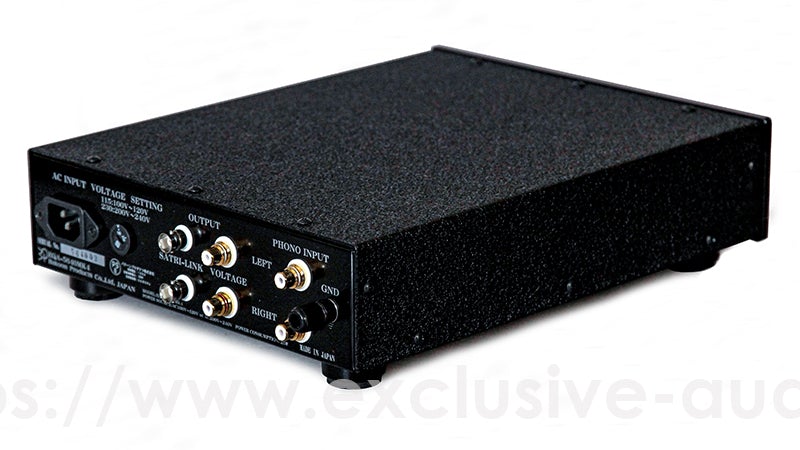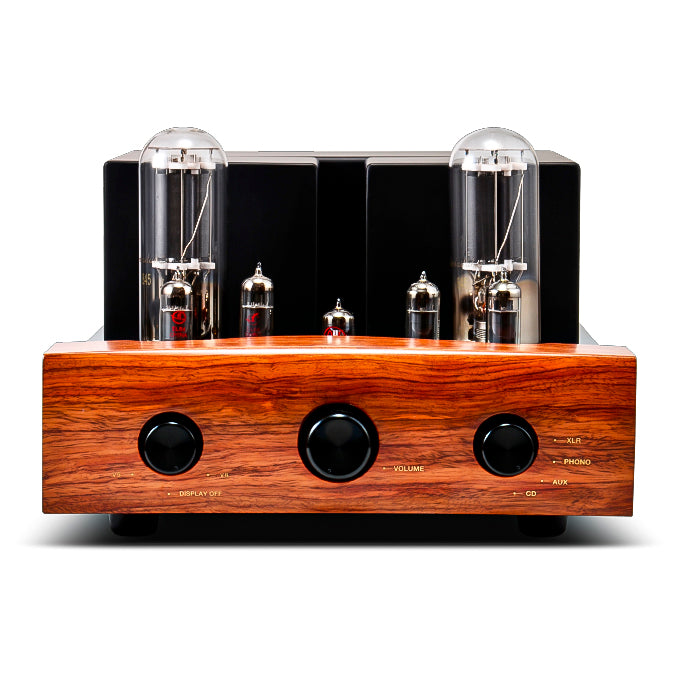Master your old records freely
Take control of vintage equalizer curves
Equipped with 6 types of equalizer curves. Ultra-low noise, high-resolution analog playback thanks to HBK(I)-IC.
The EQA-5640mk4 is a high-performance phono equalizer amplifier that makes it possible to reproduce vintage analog discs more accurately. In addition to the current standard RIAA curve, it supports a variety of equalizer curves from the 1950s and earlier, allowing you to enjoy your vintage disc collection in its original sound.
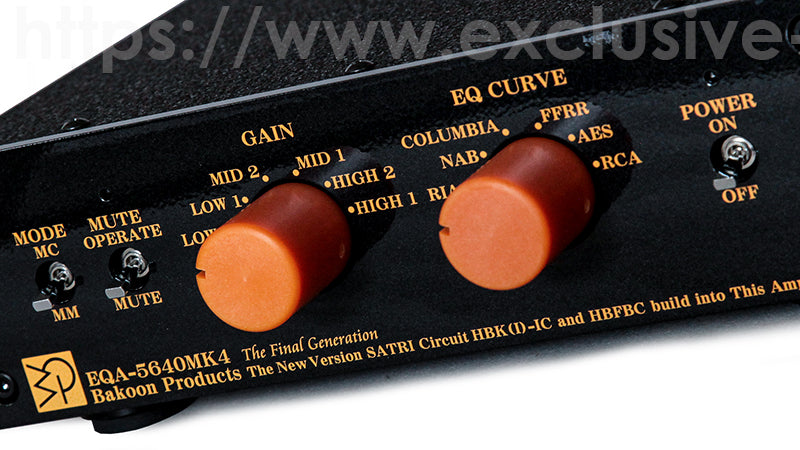
6 Types of Equalizer Curves with High-Precision Design
- Equipped Curves: Includes six typical vintage equalizer curves: the current standard RIAA, NAB, COLUMBIA, FFRR, AES, and OLD RCA. These reproduce the original sound according to the recording era and record label standards.

- High-Precision Switching: Designed so that even when switching equalizer curves, the gain variation at 1 kHz stays within 0.3 dB, allowing you to accurately hear changes caused by each curve.
- Mute Function: The mute function suppresses noise during selector switching, cartridge replacement, or stylus cleaning. There is also no loop noise when connected to a power amplifier.

Low Noise and Optimal Gain Settings with HBK(I) Circuit
- Ultra-Low Noise, High Resolution: By adopting the new-generation SATRI circuit HBK(I) (Hibiki)-IC and HBFBC, it achieves an extremely high signal-to-noise ratio with almost no noise or distortion. (An astonishing S/N ratio of -135 dB is achieved at HIGH1 gain)
- 6-Step Gain Setting: In addition to switching between MM and MC cartridges, the equalizer gain can be finely set in six steps. This allows you to achieve the optimal position (without clipping) according to the output voltage of the cartridge. (For example: HIGH1 for extremely low-output MC, LOW2 for high-output MM, etc.)

SATRI-LINK Support and Dedicated Power Supply
- Equipped with SATRI-LINK: In addition to the conventional voltage output, the output circuit is equipped with the current output SATRI-LINK.
- Noise Resistance: When using SATRI-LINK, the output impedance is tens of MΩ, isolating it from the connected preamplifiers and power amplifiers. This means that even with long cables, induced noise is not picked up, enabling high-level analog record playback.

- Analog Power Supply: The power supply uses a high-quality, large-capacity toroidal transformer in a shielded case.
- Surface-Mount Components: By using all surface-mount components, it produces a rich, direct sound in the midrange without coloration.
| Input: |
1 system, switchable between MM and MC cartridges |
|---|---|
| Output: | 1 voltage output, 1 SATRI-LINK output (can be used simultaneously) |
| EQ Curve: | RIAA, NAB, COLUMBIA, FFRR, AES, OLD RCA |
| Gain: | HIGH1, HIGH2, MID1, MID2, LOW1, LOW2 |
| Frequency Response: | 20Hz–50kHz |
| Maximum Output: | 8V (1% distortion) |
| Distortion (1kHz): | 4V: 0.06% |
| S/N Ratio: | -135dB (HIGH1) |
| EQ Error: | ±0.3dB |
| Dimensions: | 70mm (H) x 236mm (W) x 293mm (D) |
Clear Value in Supporting Multiple Curves:
The greatest feature of the EQA-5640 series is undoubtedly that it is a phono equalizer supporting multiple EQ curves.
For listeners who primarily enjoy vintage records from before the 1960s, the ability to play them using the equalization curve from the time of recording offers a significant benefit. The moment the curve matches, the sense of three-dimensionality, sustain, and depth of the sound can change dramatically, creating an impressive experience that sometimes feels like you are listening to a completely different record.
Even for records from the era considered to be after the RIAA standardization, there are examples such as DECCA using FFRR until the 1960s, or records where the old curve is actually perceived to give better sustain than the RIAA curve. The joy of digging into these differences is a unique appeal of the multi-curve capability, a distinctive feature of this model.
Circuit Configuration and Sound Character Changes
In the mk4 generation, to support multiple curves, the internal circuitry has been changed from the SATRI-IC configuration of the mk3 era to a new generation of circuitry. Some voices suggest that, when compared to ultra-high-level phono circuits like the CAP-1004, the sense of grade or refinement in the configuration may feel lacking. However, whether this leads to serious dissatisfaction with actual sound quality is not so simple. Thanks in part to the stable voltage supply provided by the analog power supply using a toroidal transformer, the sound character feels slightly fuller, centered in the midrange, and tends to a rich and settled direction. As a result, it pairs well with vintage records, offering a balance that prioritizes musicality over mere stimulation.
Gain Settings and Practical Improvements
The ability to finely adjust gain in six stages is highly practical for the increasing number of high-output MC cartridges in recent years. It makes fine-tuning easier when replacing cartridges and is effective not only for volume but also for adjusting the presence and density of sound. Additionally, the MUTE relay troubles noted in the mk3 generation have been thoroughly addressed in the mk4, demonstrating improvements in reliability.
Summary: A unit for exploring vintage records
The EQA-5640 series is not designed to pursue high resolution in a single area like the latest high-end phono equalizers. Instead, it has a very distinct character as a tool for exploring music according to the historical context in which records were made. Especially for listeners who want to enjoy the sound differences of records from before the 1950s or between different labels, this device can provide an opportunity to rediscover the analog records in their collection. The sound changes brought about by the multi-curve feature are the greatest value of this phono equalizer.
